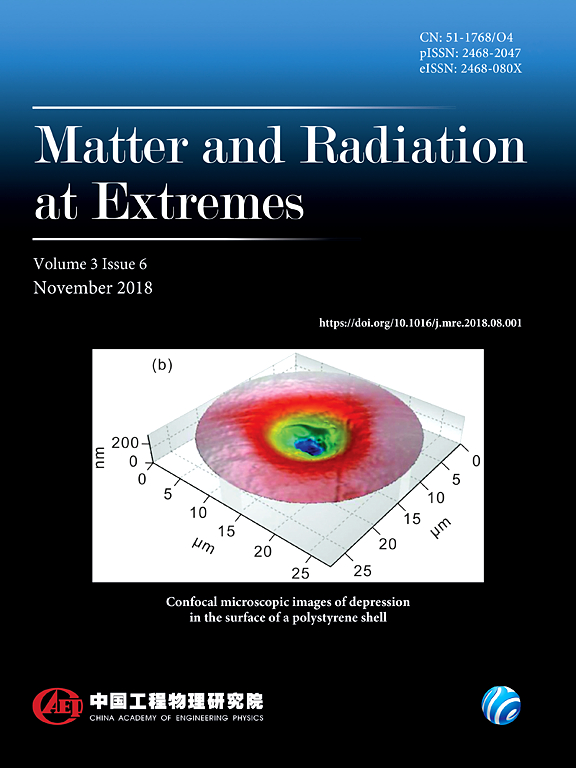Bonding-unsaturation-dependent superconductivity in P-rich sulfides
IF 4.7
1区 物理与天体物理
Q1 PHYSICS, MULTIDISCIPLINARY
引用次数: 5
Abstract
The covalent frameworks found in certain compounds, such as the S–H skeleton in H3S and the H cage in LaH10, play an essential role in their superconductivity. These compounds have the feature of bonding unsaturation (a deficiency of electrons in their covalent bonding) in common. Developing an understanding of the relationship between superconductivity and bonding unsaturation in these materials can provide new ideas for the design of superconducting materials. In this work, we explored the high-pressure phase diagram of binary P–S compounds using first-principles swarm structural calculations. In addition to the previously reported P2S and P3S structures, we identified that P5S, P8S, and P11S also have a common structural character of six-coordinated octahedral networks; however, their bonding unsaturation are distinct due to the different valence electron numbers and unequal ratios of P and S atoms. These features provide an ideal model for exploring the bonding-unsaturation dependence of superconductivity. We estimated the average bonding unsaturation of these P-rich compounds based on the valence electron numbers and the coordination numbers of the central P/S atoms. Interestingly, the resultant average bonding unsaturation was found to be proportional to the predicted superconducting transition temperature. This finding was also verified in MH9 (M = Y, Th, and Pr) and doped H3S (Si, C, and P) compounds. Our work provides an opportunity to gain a deeper understanding of bonding-unsaturation-dependent superconductivity.富p硫化物中键合-不饱和相关的超导性
在某些化合物中发现的共价框架,如H3S中的S-H骨架和LaH10中的H笼,对它们的超导性起着至关重要的作用。这些化合物共同具有键不饱和(共价键中缺乏电子)的特点。了解这些材料的超导性与键结不饱和之间的关系,可以为超导材料的设计提供新的思路。在这项工作中,我们利用第一性原理群结构计算探索了二元P-S化合物的高压相图。除了先前报道的P2S和P3S结构外,我们发现P5S、P8S和P11S还具有六协调八面体网络的共同结构特征;然而,由于价电子数的不同和P、S原子比例的不同,它们的成键不饱和是明显不同的。这些特征为探索超导的键-不饱和依赖关系提供了一个理想的模型。我们根据价电子数和中心P/S原子的配位数估计了这些富P化合物的平均成键不饱和度。有趣的是,由此产生的平均键合不饱和度与预测的超导转变温度成正比。这一发现也在MH9 (M = Y, Th和Pr)和掺杂H3S (Si, C和P)化合物中得到证实。我们的工作提供了一个机会,以获得更深入的了解键不饱和相关的超导性。
本文章由计算机程序翻译,如有差异,请以英文原文为准。
求助全文
约1分钟内获得全文
求助全文
来源期刊

Matter and Radiation at Extremes
Physics and Astronomy-Atomic and Molecular Physics, and Optics
CiteScore
8.60
自引率
9.80%
发文量
160
审稿时长
15 weeks
期刊介绍:
Matter and Radiation at Extremes (MRE), is committed to the publication of original and impactful research and review papers that address extreme states of matter and radiation, and the associated science and technology that are employed to produce and diagnose these conditions in the laboratory. Drivers, targets and diagnostics are included along with related numerical simulation and computational methods. It aims to provide a peer-reviewed platform for the international physics community and promote worldwide dissemination of the latest and impactful research in related fields.
 求助内容:
求助内容: 应助结果提醒方式:
应助结果提醒方式:


